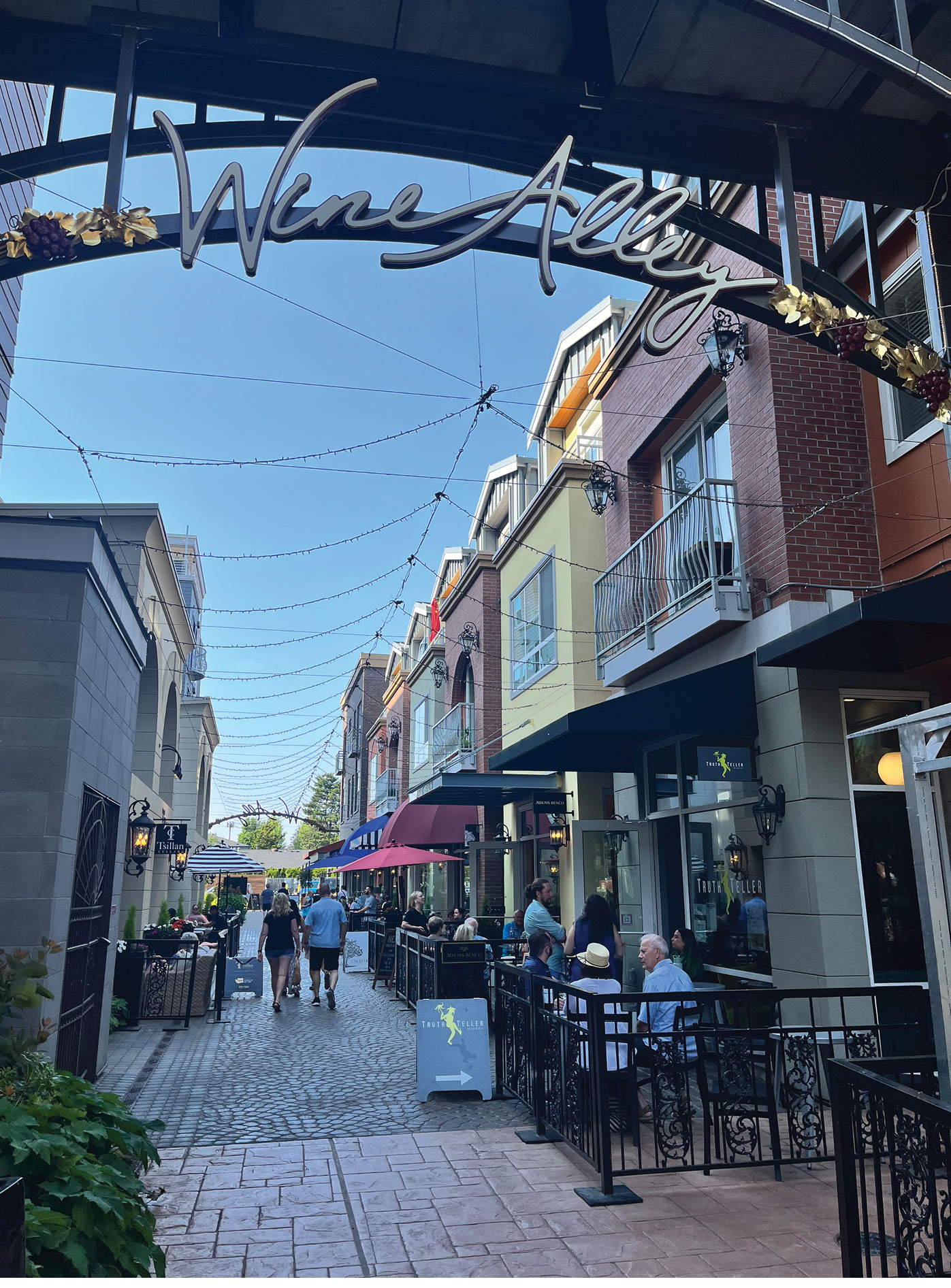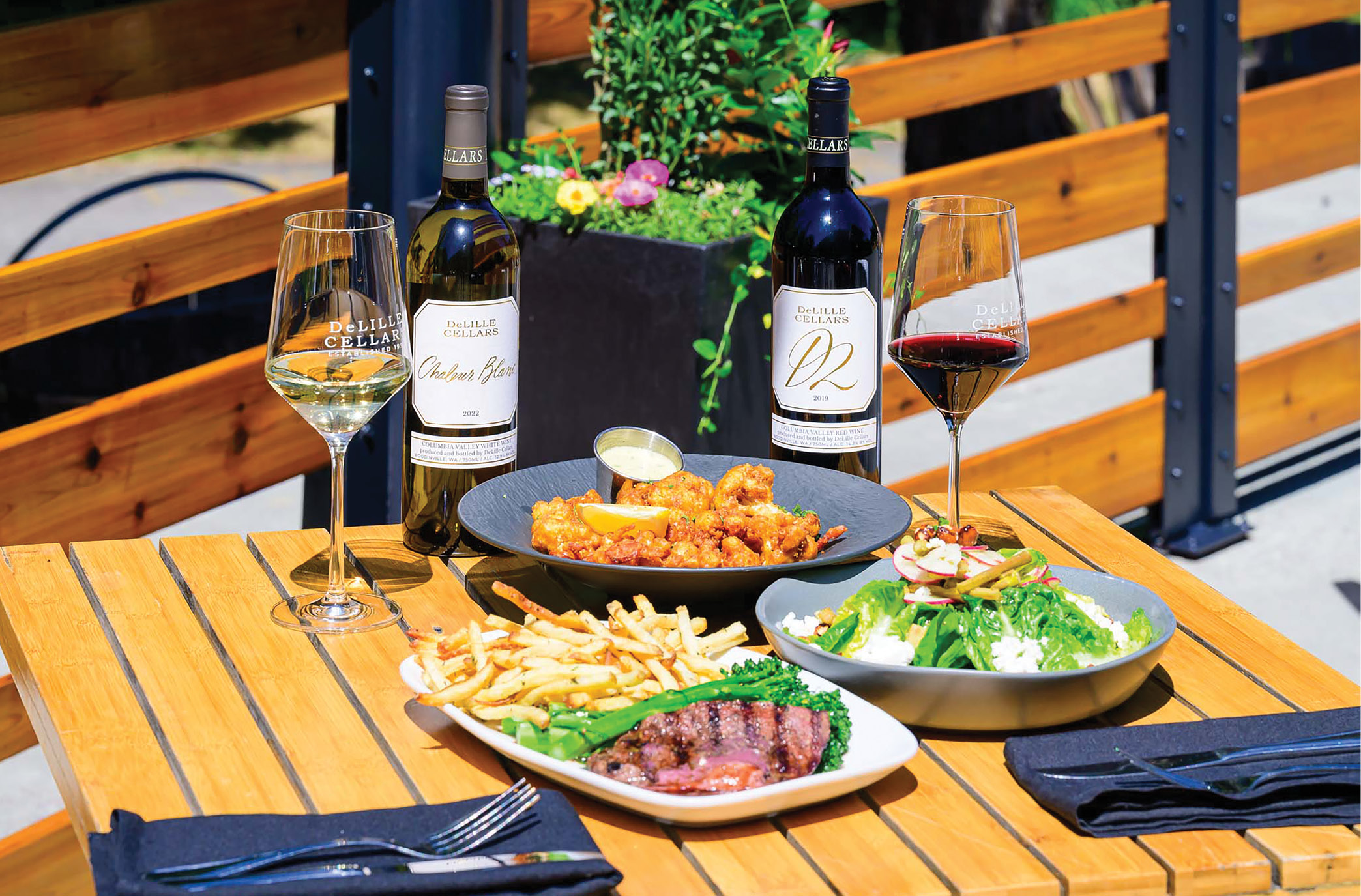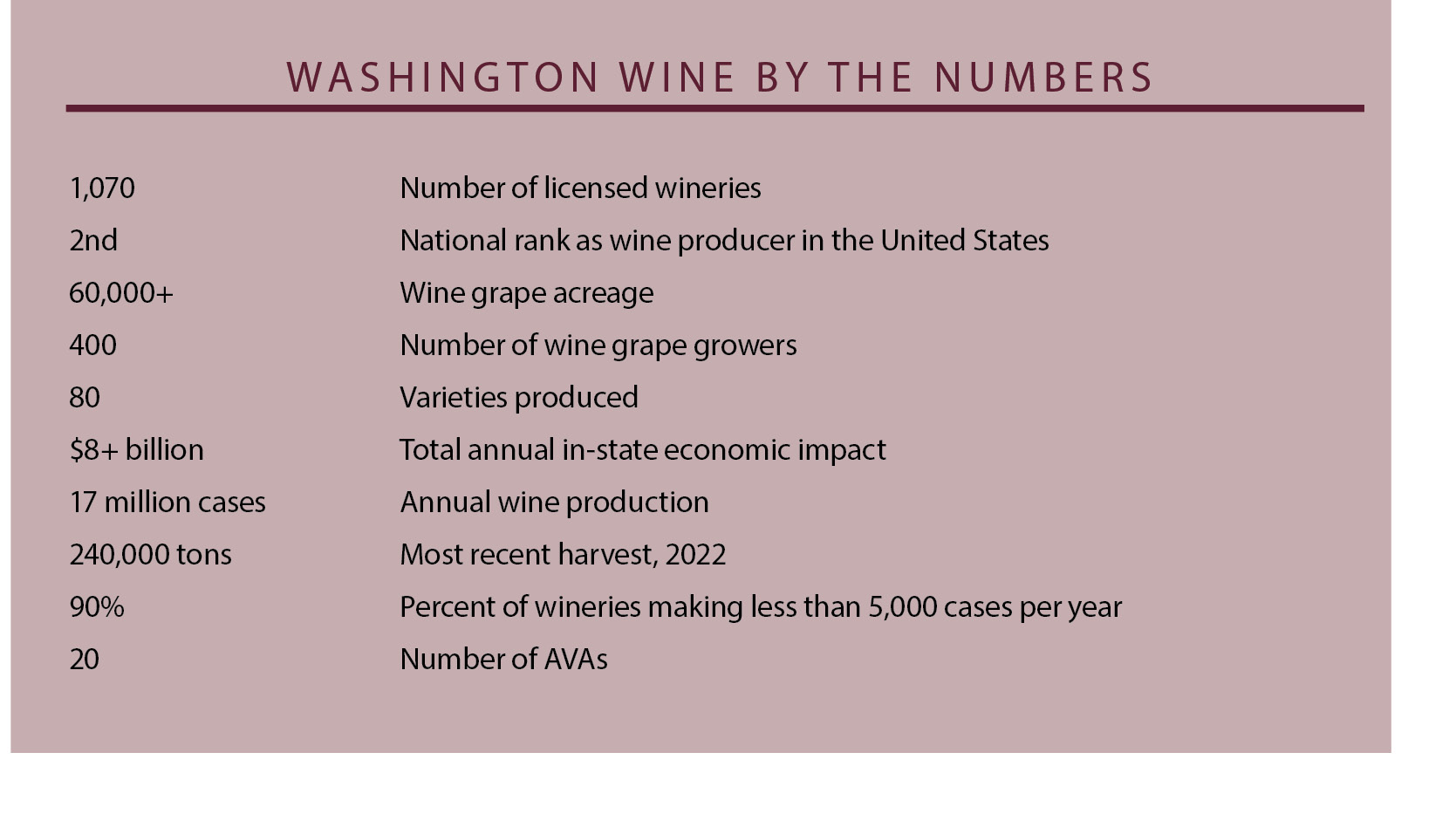Among the world’s most celebrated wine-producing regions, Washington remains the new kid on the block.
“Nobody ever really thought about growing grapes here,” says Kristina Kelley, executive director of the Washington State Wine Commission. “It’s not like France, where it stretches back multiple generations,” Kelley says. “We didn’t really get going until the 1960s.”
So, it’s a point of justifiable pride that, from that humble beginning, Washington produces more wine today than any state not named California. Last year, the state’s grape harvest of 240,000 tons — up 34% — yielded more than 17 million cases of Washington State Wine. With an annual economic impact of more than $8 billion, the wine industry employs almost 40,000 Washingtonians. Wine is Washington’s top agricultural product.
But mere volume doesn’t begin to tell the story. In a changing market where quality is increasingly king, Washington caters to connoisseurs drawn to its award-winning Cabernets, Merlots, Malbecs, Syrahs, Chardonnays, Sauvignon Blancs and Rieslings. And while the most prolific Washington wineries — think Chateau Ste. Michelle, Columbia Crest, Hogue Cellars — distribute nationally, by some accounts as much as 75% of Washington wine is consumed in-state. Washingtonians guard their wine zealously.
“The Pacific Northwest, and Washington in particular, has a very loyal customer base and there’s a lot of pride in local products,” says Tom Dugan, CEO of the esteemed DeLille Cellars. “So not only is most of Washington wine sold in Washington, but most of the wine that is sold in Washington is Washington wine.”
Where the Grapes Grow
Washington’s wine region, with more than 60,000 acres under harvest, lies east of the Cascade Range and a world away from the state’s Pacific Coast population centers. Twenty of the state’s 21 AVAs (American Viticultural Areas) — including the Columbia Valley, Walla Walla Valley, Red Mountain, Naches Heights and Horse Heaven Hills — dot the semi-arid, grape growing region. On about the same latitude as Burgundy and Bourdeaux, it’s a region of wine-friendly soils and climactic conditions.
“When they think of Washington, most people think of Seattle and they think rain,” says Kelley.
“But Eastern Washington is like a low desert and gets maybe 10 inches of rain a year and up to 17 hours of sunshine a day,” she says. “It’s really perfect for grapes.”
Distinct from many of the world’s great wine regions, says Kelley, the Eastern Washington climate allows for a wide assortment of varieties to excel, such that Washington cannot be defined by a single grape variety of group of grapes.
“We have so many different grapes that can be grown here,” she says, “unlike really any other wine region.”
DeLille, says Dugan, sources most of its grapes from the Red Mountain AVA within the Columbia Valley.
“It’s a very small AVA, maybe 3,000 acres,” he says. “And it’s really well known for the Cabernet it produces. Cabernet,” he says, “is the number one varietal in the U.S., and Red Mountain produces some great ones. Very rich and powerful.”
‘A Sense of Community’
Also different from other wine producing states, the majority of Washington’s vineyards are owned not by wineries but by hundreds of independent farmers.
“In Washington,” says Kelley, “you may be growing grapes, but you may also be farming cherries, apples and pears. Right now,” she says, “we’re harvesting grapes, but two months ago it was something else. There’s an incredible sense of community,” she says, “among our growers and winemakers.”

Wine Alley in Woodinville
Photo courtesy of Woodinville Wine Country
“Most of the fruit in Washington,” says Dugan, “is grown by a grower and contracted by a winery. We own our own estate vineyard, but we also work with more than 15 growers. It could be on a tonnage contract or something else. There are tons of different iterations.”
Here’s yet another singularity. While Walla Walla is the nexus of Washington’s eastern wine region, Washington’s unofficial wine capital happens to be hundreds of miles away, in an area that doesn’t even grow grapes. About half an hour east of Seattle, the small town of Woodinville has built an economy based on wine and wineries, many of which are outposts of parent operations out east. DeLille produces all of its wine in Woodinville and, like scores of other vintners, operates a tasting room there.
“We pick the grapes by hand, load them on refrigerated trucks, truck them over the Cascades and produce our wine here,” says Dugan. “Woodinville,” he says, “is an important part of our legacy.”
Woodinville is Western Wine Central
With 130 wine brands and nearly that many tasting rooms, Woodinville is a place to experience all that is Washington wine.
“From the prominent and historic Chateau Ste. Michelle, the oldest winery in the state,” reads a recent dispatch from Forbes, “to DeLille Cellars to Andrew Junuik Wines, Woodinville presents a veritable graduation of the longevity, unique wine styles, and innovation of the state.”

Washington’s DeLille Cellars is steeped in tradition.
Photo courtesy of DeLille Cellars
Woodinville has evolved — organically as it were — since the early 1970s when Chateau Ste. Michelle planted a flag in the village, which still numbers fewer than 14,000 residents.
“The whole rationale was that most of the state’s population was living on this side of the mountain range,” says Adam Acampora, executive director of Woodinville Wine Country. “We’re half an hour from Seattle, and besides that population we have the benefit of the cruise lines docking at the Port of Seattle and the airlines coming through Sea-Tac.”
As the industry’s major players have set up shop in Woodinville, says Acampora, so have boutique producers operating out of the town’s warehouse district.
“A lot of them have full-time jobs during the week,” he says. “They come from tech engineering, biotech, Boeing, things like that. They had a dream of owning a winery and they’re making it in the evenings and selling it on the weekends.”
Driven by wine, Woodinville is expanding, with more than 800,000 sq. ft. of commercial space planned for the next seven years, according to Acampora. The new development, he says, is to include 1,600 residential units and three high-end hotels, all with a wine motif. Woodinville’s population, Acampora says, is projected to grow by up to 40% over the next five years.
“When you look at the amount of tax revenues from wineries and tasting rooms,” he says, “it equates to a city four times this large. In 30 years, we’ve never even had to raise property taxes. Woodinville wine,” he says, “is just booming.”


